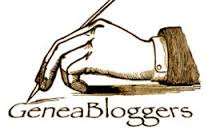|
On Sunday I posted a transcription of a letter my uncle wrote to my grandparents on 8 July 1942 describing leaving his home in San Francisco and traveling to Navy boot camp in San Diego.
When you are reading and sharing your family letters, it will be a much richer experience if you take the time to understand the context in which the letter was written. Here are some ideas to get you started in researching the context. Look for images. Warren mentioned several places in his letter, among them the Federal Building in San Francisco and the Santa Fe railroad depot in Los Angeles. I was able to do image searches on google and find historical photos of those buildings. Libraries and state archives are another good resource for finding vintage images of buildings. With these searches I was able to go back in time and see what my uncle saw. I knew that Warren was in the navy, and I was able to use Fold3 to discover a bit more about his experience. A 31 December 1943 muster roll from the submarine Searaven showed an enlistment date of 6 July 1942, just two days before he wrote the letter. That immediately got me thinking about what my 21-year-old uncle might have been feeling – excitement, fear, homesickness and more. I thought about the date. July 6 was a Monday. Just two days after Independence Day, the most patriotic of holidays. I imagine the first 4th of July after Pearl Harbor must have held some particularly impassioned celebrations. Might those have perhaps prompted Warren to enlist? What was going on in San Francisco and the world at that time? I looked at the San Francisco Chronicle and found some answers. On Sunday 5 July 1945, page 1 of the comics ran the cartoon, “Terry and the Pirates.” In this strip, the evil Chinese captor threatens Muzz and derides her independence. Mazz ponders the words of the Declaration of Independence regarding the inalienable rights of life, liberty and the pursuit of happiness and how we must invest in our futures to keep those rights. Elsewhere in the same paper, above the masthead on page 1 of the news section, was a striking photograph, the full width of the page, captioned “Yesterday, San Francisco saw a parade. San Francisco has seen other parades, many of them, but never one like this. For passing grimly down Market street marched sudden death. This was typified by a 3200-man combat team of the Army of the United States. Armed to the teeth, this unit, however, was not unique. It was only representative of hundreds of other such units in the United States and over the world ready – and anxious – for a scrap. Above, infantrymen of the unit march by with fixed baoynets.”[i] Other page 1 stories included “New Zealanders Pile Into Rommell; The Tide MAY Be Turning in Battle of Egypt,” “First Yank Flyers Skim Dutch Housetops to Bomb 3 Airdromes in Nazi Europe” and more.[ii] It seems that every day the first several pages of the Chronicle were filled with accounts of the war. Warren must have had those stories in his mind when he enlisted and as he wrote his parents of his experiences as a new recruit. When you’re reading old correspondence, make sure you spend some time studying the history, reading the local newspapers of the time, and finding images to make your family letters and the people who wrote them come alive. [i] San Francisco Chronicle, 5 July 1942, page 1, col 1. [ii] San Francisco Chronicle, 5 July 1942, page 1
9 Comments
|
AuthorMary Kircher Roddy is a genealogist, writer and lecturer, always looking for the story. Her blog is a combination of the stories she has found and the tools she used to find them. Archives
April 2021
Categories
All
|

